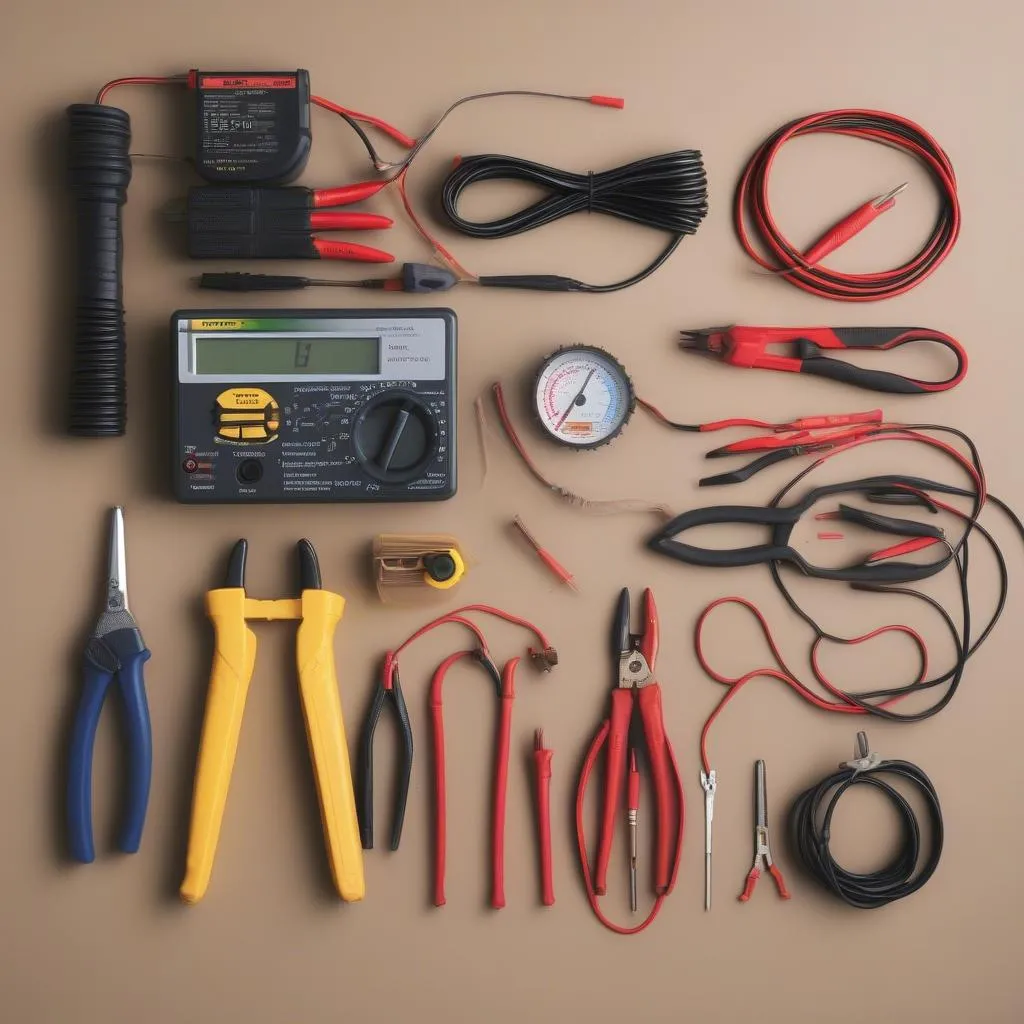AdBlue is a crucial component in modern Vauxhall vehicles, designed to reduce harmful emissions. However, issues with the AdBlue system can arise, prompting warning lights and affecting your vehicle’s performance. This guide will cover everything you need to know about Vauxhall AdBlue reset, including troubleshooting common problems, resetting warning lights, and understanding AdBlue functionality.
Understanding AdBlue and its Importance in Vauxhall Vehicles
AdBlue is a urea solution that is injected into the exhaust system of your Vauxhall vehicle. This solution reacts with harmful nitrogen oxides (NOx) in the exhaust gases, converting them into harmless nitrogen and water. AdBlue plays a crucial role in meeting stringent emission standards, ensuring that your Vauxhall vehicle contributes to cleaner air.
Common Vauxhall AdBlue Issues & Warning Lights
While AdBlue is generally reliable, several issues can arise, leading to warning lights on your dashboard. These can include:
- AdBlue Level Low: This warning indicates that your AdBlue tank is running low and requires a refill.
- AdBlue System Malfunction: This indicates a problem with the AdBlue system itself, such as a faulty sensor or injector.
- AdBlue Quality Issue: This warning suggests that the AdBlue you’ve used is not of the required quality or has been contaminated.
Troubleshooting Vauxhall AdBlue Problems
Before attempting to reset your AdBlue system, it’s essential to understand the root cause of the issue. Here’s a step-by-step approach to troubleshooting common AdBlue problems:
-
Check AdBlue Level: The first step is to check the AdBlue level in your vehicle’s tank. You can typically do this by referring to the information displayed on your dashboard or consulting your vehicle’s owner’s manual.
-
Refill AdBlue: If the AdBlue level is low, refill the tank with high-quality AdBlue solution. Ensure that you use the correct AdBlue, as using an incompatible solution can damage your system.
-
Inspect AdBlue Tank & Lines: Check for any leaks in the AdBlue tank or lines. Look for signs of leaks, such as wetness, discoloration, or AdBlue residue.
-
Check AdBlue Sensor: If you suspect a problem with the AdBlue sensor, it’s best to consult a qualified mechanic for diagnosis and repair.
-
AdBlue System Fault Diagnosis: If the problem persists or you’re experiencing a system malfunction warning, it’s crucial to diagnose the issue using a diagnostic tool. A skilled mechanic can identify the specific fault and provide the appropriate solution.
Resetting Vauxhall AdBlue Warning Lights
Once you’ve addressed the underlying issue, you may need to reset the AdBlue warning light on your dashboard. Here’s a general guide on how to reset it:
- Turn Ignition On: Turn your vehicle’s ignition on but don’t start the engine.
- Locate Reset Button: Refer to your vehicle’s owner’s manual to locate the AdBlue warning light reset button. It’s usually located on the dashboard or steering wheel.
- Reset Warning Light: Press and hold the reset button for a few seconds until the AdBlue warning light disappears.
Important Note: The specific steps for resetting the AdBlue warning light may vary depending on your Vauxhall model. Always consult your owner’s manual for detailed instructions.
Vauxhall AdBlue Reset by Model:
Here are detailed instructions for AdBlue reset on specific Vauxhall models:
Vauxhall Grandland AdBlue Reset:
vauxhall grandland adblue reset
Vauxhall Insignia AdBlue Reset:
vauxhall insignia adblue reset
Vauxhall Insignia AdBlue Warning Light Reset:
vauxhall insignia adblue warning light reset
Vauxhall Vivaro AdBlue Reset:
how to reset adblue warning vauxhall vivaro
Vauxhall Zafira AdBlue Reset:
how to reset adblue warning vauxhall zafira
Expert Insight:
“AdBlue is an essential part of modern Vauxhall vehicles, and understanding its functionality is crucial for maintaining optimal performance and compliance with emission regulations. When encountering AdBlue issues, always remember to follow the recommended troubleshooting steps before attempting to reset the warning light,” says John Smith, an experienced automotive technician with over 15 years of experience in the industry.
FAQ:
Q: How often should I refill my AdBlue tank?
A: AdBlue consumption depends on driving conditions and your vehicle’s mileage. Generally, refilling is required every 6,000 to 12,000 miles. However, it’s best to check your vehicle’s display or owner’s manual for accurate guidance.
Q: Can I use any AdBlue solution?
A: No, it’s essential to use only high-quality AdBlue solution that meets the industry standard. Using an incompatible solution can damage your AdBlue system.
Q: What happens if I ignore the AdBlue warning lights?
A: Ignoring AdBlue warning lights can lead to severe consequences. Your vehicle’s performance may be affected, and in some cases, the engine may even shut down to prevent further damage.
Q: Is it safe to drive my Vauxhall with a low AdBlue level?
A: It’s generally safe to drive a short distance with a low AdBlue level. However, it’s essential to refill your AdBlue tank as soon as possible to avoid any potential issues.
Q: Can I reset the AdBlue warning light myself?
A: You can usually reset the AdBlue warning light yourself, but only after addressing the underlying issue. Consult your vehicle’s owner’s manual or a qualified mechanic for specific instructions.
Conclusion:
Understanding and addressing AdBlue issues is essential for maintaining the smooth operation and longevity of your Vauxhall vehicle. By following the troubleshooting steps and resetting warning lights correctly, you can ensure that your AdBlue system continues to function efficiently and effectively. If you encounter any persistent issues, consult a qualified mechanic for professional diagnosis and repair.

